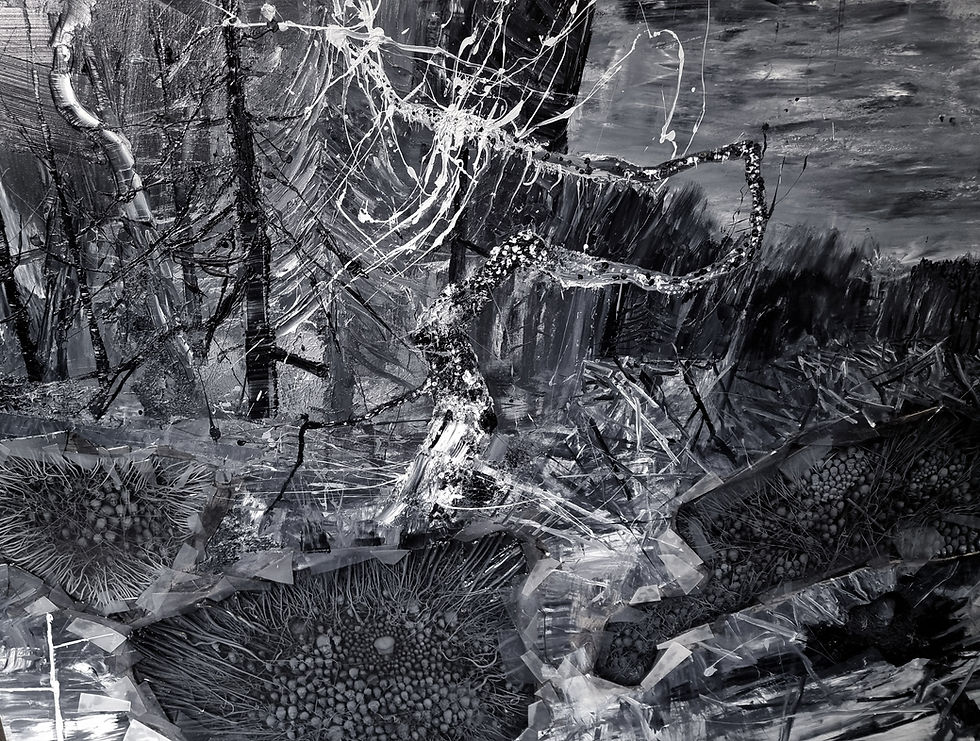Sculpting a Face of a New Generation
- julia_mji@me.com
- Apr 11, 2019
- 4 min read
Updated: Aug 31, 2019

Art is always a reaction to the preirod of time in which it’s made. No art is ‘timeless’, any artist who refuses to accept this insight and attempts to escape from the present day risks artistic failure. Huang Yulong, however, is an example of a young Chinese artist who salutes the intricacies that his time so generously bestows upon its contemporaries, to create his sculptural works, rendered in a variety of media ranging from traditional Chinese porcelain to bronze and, recently, crystal.
Born in China in 1983, in the city of Huaian of Anhui province, Huang Yulong went to what is known as the ‘porcelain capital’ of China, the city of Jingdezhen in the neighbouring Jiangxi province to pursue his career as an artist. There he received his Bachelor of Fine Arts in Sculpture from the Jingdezhen Ceramic Institute. Shortly after his graduation in 2007, he started to create his peculiar ‘hoodie’ characters. Best known for his sculptures of Buddhas wearing hooded sweatshirts, Huang Yulong’s oeuvre of work combines Eastern tradition and symbolism with the aesthetics of hip-hop. Such cultural mash-ups confront the serenity and purity of traditional Chinese images, updating and urbanising them to reflect China’s rapid transition from what was once an insular and isolated society to its current internationally competitive, evolving and forward-looking state.
Through his art, employing certain cultural symbols and attributes, utilising the concepts, ideologies and philosophies from his past and present, Huang Yulong communicates his ideas of identity to the world. He doesn’t try to erase cultural boundaries or blur the border between ‘high’ and ‘low’. Yulong simply contours out the new reality that he, as well as legions of local ‘post-80s’ kids, who grew up under a sudden and impulsive influence of foreign culture, belong to.
Huang Yulong’s enthusiasm for hip-hop has been driving his artistic career for almost a decade. Fascinated with its free, passionate and rebellious attitude, he uses his work as a channel to express the magnitude of emotion that takes over him when he listens to rap or dances to hip-hop music. Hip-hop came to his life earlier than art. While still in high school, the discovery of a ‘different’ and ‘new’ type of music served as a sheer means of dealing with stress and issues that a young adolescent usually goes through at that age. The affair that started off as an infatuation with something strikingly different and seductively foreign turned into a life-long commitment, a state of being, and simply a way of life. Yet, with his knowledge and outlook being largely shaped by Chinese culture, he taps into his own tradition and heritage to enrich his work as an artist.

Whether Huang Yulong appropriates an image of a Buddha, an iconic image of a prominent communist figure, a mythical image of centaurs, or simply creates a sculpture of a person – a hooded sweatshirt, one of the crucial attributes of street fashion, remains an indispensable element of each sculpture.
His subjects have no faces. As Huang Yulong comments, ‘I put all my emotions into this guy in a sweater. I free the body from its head and facial features not to have it affected by irrelevant information. Instead, I hint at his personality and strength through the posture and body language. I use the hood to complete his figure; in fact, this hooded sweatshirt becomes the figure and the character itself.’
The void that evocatively fills the space under the hood of Huang Yulong’s subjects is also there to leave the spacefor contemplation and imagination of the viewer. Traditionally, in Chinese arts, the concept of a ‘void’ or empty space dwells upon the notion of respect of an artist towards his viewer. Indeed, upon analysing traditional Chinese landscapes or brush paintings of various subject matters, and the artists’ tendency to leave behind a large portion of ‘empty’ white spaces on paper or eliminate a sense of perspective suggests that the viewer is entitled to his or her own point of view on art, in particular, and the universal order of things, in general.
For years Huang Yulong has been dedicating himself to studying Chinese culture with its long history and profoundly rich heritage, but as the artist points out ‘the scope and the extent of it is hardly possible to fathom’, therefore his work only ‘scratches the surface’ of China’s inexhaustible source of tradition. Nevertheless, the artist manages to leave behind just enough symbolic and cultural clues to let us make sense of his work and link West and East together. Sometimes Huang Yulong’s hoodies, accessorised with a fair share of ‘bling’ and gold, bear no resemblance with the Orient, until one makes an association of a gesture of an open palm pressed against the fist with an ancient form of salutation in China.
What is really happening is that the artist is taking the conventions, philosophies and ideologies of East and West and pulverizing their structure and logic to make an indistinguishable new mass that is itself a new work of art and a new cultural and social paradigm. Huang Yulong sculpts a new face of his generation, new icon that is up-to-date with the period of diversity and integration, confusion and uncertainty, like our own. With his art, Huang Yulong doesn’t attempt to establish guidelines for anyone, he only seeks orientation, he does not make statements, but expresses emotions and asks questions about the reality that is ever more complex, and about the role of art itself within this reality.
Written by Liya Prilipko
View Hunag Yulong work: https://www.jmartmanagement.com/huang-yulong
JM Art Management























